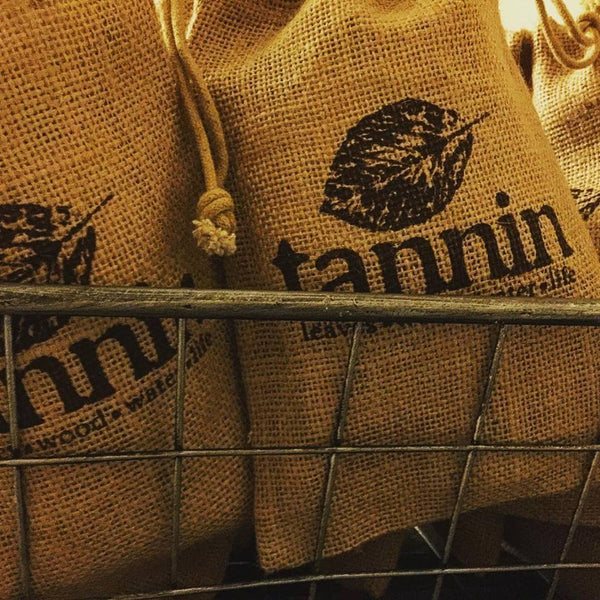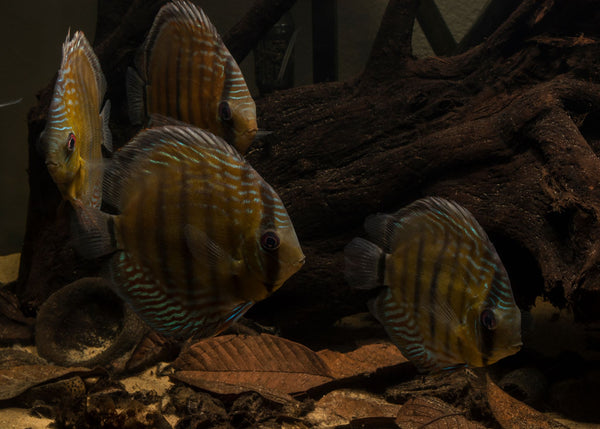- Continue Shopping
- Your Cart is Empty
Heading further into the niches...
I remember back in Tannin's "pre-startup" days, when I'd listen to all sorts of podcasts and watch videos of entrepreneurial "experts" talking about any number of business-related subjects, as I'd attempt to glean any kernel of knowledge from the seemingly inexhaustible supply of vapid, regurgitated information out there.
I recall one particular "expert" espousing the benefits of "niche markets" in a most cheesy way, with the comical affirmation that, "The riches are in the niches!" (obviously, the "riches" he referred to don't seem apply to aquarium vendors, lol)

This of course made me laugh, because- well- I built a business around "twigs and nuts" and dark brown water- can't get much more niche-y than that! I filed the ridiculous jingle in my head, only to have it pop up recently in a totally different context: The idea of creating "niche micro-habitats" within our aquariums.

As someone who's kept so-called "community tanks" forever, I can certainly appreciate the challenge and the allure of keeping multiple fish species together in one aquarium. And I know most of you can, too. It's interesting to me that in the last decade or so, the hobby concept of a "community aquarium" has sort of evolved from, "A collection of different kinds of cool fishes I like from all over the world, living in one tank"- you know, a "buffet" of fishy favorites, to more of a "curated" collection of fishes that might be found in the same general habitat and location...or even in the exact location...or more specific than that!

I think the shift really started with the rise in popularity of African Rift Lake cichlids. I mean, sure you could keep fishes from different lakes together, but when we collectively learned that each lake not only harbors different fish species, but offers unique environmental parameters and niches that the resident fishes have evolved to live in (like Lake Tanganyikan shell-dwellers, for example), it became more obvious that some degree of specialization was required.
And then we began in earnest to keep other species, like Rainbowfishes and killifishes, which had distinct genetic "races" or populations from various locales that would hybridize if mixed, throwing the already muddled taxonomy and genetics of these fishes into an even greater morass of confusion.

And then there were the Apistogramma...Yeah, the South American "version" of African killies...Just plain trouble, from a speciation standpoint, if you mixed males and female of different varieties in the same tank.

Sure, there are like a thousand more examples we could beat the shit out of to make our case, but I think you're getting the idea: Our idea of a "community tank" has sort of evolved with our knowledge of fishes- and I think that's a good thing.
Nowadays, you have "South American"-themed community tanks, "Asian"-themed community tanks, etc. What's most profound about this shift, in my humble opinion, is that it's enabled us to study more closely- and replicate more closely- the unique environments from which our fave fishes hail.

And this is where my interest comes in...
It's entirely realistic, comfortable, and simply "normal" for many of the fishes we play with in aquariums to be kept in close quarters with other species. In one field study of forest streams in the Rio Negro in Brazil (you knew I'd had back there, right?), it was noted that there were up to 20 different species present, all living in close proximity to each other, within distinct niches within the habitat. The population density was an astounding 100 individuals per cubic meter!
That's a lot of fishes!
And the takeaway here isn't that you should pack the hell out of your community tank because some stream in the jungle has a lot of fishes living in a small area of space.
No.
The real takeaway is the fact that the study indicated a significant number of species in that relatively small space, living in different niches within the habitat!

This is where things get interesting, in my opinion, because even in my beloved blackwater streams, you have multiple niches in which fishes live their entire lives, obtain nutrition, protection, and spawning locations.
The implications for our botanical-style aquariums are manifold...
I mean, already I've received dozens of pics from hobbyists worldwide showing their Apistogramma or Nannochromis, for example, spawning in "Jungle Pods" or "Savu Pods."
We've seen Plecos and other catfishes inhabiting and interacting with all sorts of botanical materials, much like they do in the wild.

We've seen fishes like Badis, loaches, even wild Betta species living under a canopy of leaves and other botanicals. A variety of fishes living in all sorts of little niches within the botanical scape.
This is very cool. This is profound.
The fishes are "sorting things out for themselves" and inhabiting the little niches that they would in the wild. We have great information about these environments, photos of the "configuration" they contain, and detailed studies on populations inhabiting these niches.

And we now have the availability of all of these cool leaves and botanical items, and are understanding the overall chemical and structural makeup of these habitats like never before!

We're creating aquariums that deliberately foster the development of niches.
I've spoken with hobbyists attempting to create deep leaf litter beds for specialized catfishes and so-called "Darter Characins", and tanks with varied, rich substrate composition to accommodate loaches, etc.

You should see how detailed and specific the requests for materials to be curated for some customer's "Enigma Packs" are! Like, we have to really research them sometimes!
Super cool!

And more exciting, we're developing more modern interpretations of the "community aquarium", deliberately layering, populating, and optimizing several microhabitats within the same tank.
What understandings will we gain by creating these deliberate configurations within our aquariums? What successes will we have with previously temperamental fishes? What reproductive secrets will we unlock, all by providing more faithful representations of the communities and micro niches from which they come?

In today's hobby, it's no longer "good enough" for many specialty fish enthusiasts to simply toss in a PVC pipe section for a "cave", or a "Texas Holy Rock" as a hiding or spawning locale for that Pleco or cichlid. For the first time, we are seeing our customers request botanical materials from specific geographical regions- not to satisfy a judge in some snobby aquascaping contest-but to determine if there are advantages for our fishes that may be gained by using the actual materials that are found in a specific region!
For many, the idea of replicating more realistically the environmental niches that these fishes inhabit in the wild is more compelling, fascinating, and proving to possibly be more successful.
We're at a very special time in the aquatic hobby.
A time when information, technology, technique, communication, and creativity are all intersecting, equipping us with all of the tools- both metaphorically and physically-that we need to create aquariums that may surpass anything we've done in the past, in both form and function.
By studying and sharing information and experiences about the unique niche habitats that many of our fishes come from, we're accelerating the pace of these breakthroughs and discoveries, and maybe- just maybe- further reducing our reliance on wild-collection of some species from their fragile ecosystems, preserving them for future generations to enjoy.

Yeah, there are niches...and then there are NICHES. Find yours. Learn about it. and share the knowledge.
Stay creative. Stay innovative. Stay enthused. Stay resourceful. Stay impactful...
And Stay Wet.
Scott Fellman
Tannin Aquatics.
2 Responses
Scott Fellman
Thanks for the kind words! Hope you start a fabulous, successful business! Good luck and thanks for your support!
-Scott
Ryan Mutiga
Wow. Nice information actually quite inspired to start my own aquarium business in a few years time and hopefully implement some of this in my country Kenya thanks for the Inspiration and hope to see more and more














Scott Fellman
Author